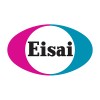
The Effect of Nitroglycerine on Microcirculatory Abnormalities During Sepsis
SepsisSeptic ShockThe purpose of this study is to evaluate the effect of nitro-glycerine on the microcirculation (smallest vessel type) in patients with severe sepsis and septic shock. Nitro-glycerine is a well known medicine in cardiology and is used to improve circulation. In this ICU the investigators use nitro-glycerine to improve the organ perfusion; but it's no common therapy in the rest of the world. The investigators now compare nitro-glycerine and placebo by looking to the sublingual microcirculation by a small camera (SDF imaging).

Is Helicobacter Pylori Infection a Cause or Treatment Failure of Iron Deficiency Anemia in Children...
Helicobacter Pylori InfectionIron Deficiency Anemia3 moreHelicobacter pylori is recognized as a major gastrointestinal pathogen in developing countries. This microorganism infects up to 60% of children less than five years in those countries and is strongly associated with chronic gastritis and peptic ulcer disease in children and adults. The progression of gastritis to atrophy often leads to decreased gastric acid output, which is a well-known risk factor for anemia. Gastric acid is essential for increasing the bioavailability and absorption of non-heme dietary iron, the most important source of iron in developing countries. Numerous reports suggest that iron malabsorption secondary to low gastric acid output is a problem in developing world countries. It has been further observed that iron deficiency anemia is resistant to iron therapy particularly in these countries. In a recently completed study we observed an association of anaemia with H. pylori infection. We hypothesize that the poor bioavailability of iron in these countries could be related to H. pylori -induced low gastric acid output and we propose to investigate the role of H. pylori infection as a cause of anemia and treatment failure of iron supplementation in Bangladesh. A prospective, randomized, double-blind, placebo-controlled field trial is proposed among four groups ( 65 each) of H. Pylori infected children of 2-5 years of age with iron deficiency anemia. The children will be assigned to one of the four therapies: antibiotics alone (for H. Pylori eradication), antibiotic plus iron therapy, iron therapy alone, or placebo. Hemoglobin concentration, serum ferritin concentration, and transferrin receptor will be measured before and at 1 and 3 month after the intervention. We also propose a complementary study in an additional 20 children with H. Pylori infection and iron deficiency anemia to assess iron absorption with application of double stable isotopes. The change in hematological parameters will also be compared among the groups before and after the therapy. The results of this study are expected to have implications in the prevention and treatment of iron deficiency anemia in developing countries.

A Safety and Efficacy Study of Intravenous E5564 in Patients With Severe Sepsis
SepsisShock4 moreSepsis is a serious condition where there is inflammation and damage to body tissue, usually caused by an infection. This infection can lead to decreased function of vital body organs and in some cases may lead to permanent health problems or death. Much of the injury is due to endotoxin, a harmful substance produced by certain types of bacteria. An endotoxin antagonist is designed to block the effects of endotoxin. This study is designed to study the safety and efficacy when treating patients with severe sepsis.

Phase I Study of Vasoactive Intestinal Peptide in Patients With Acute Respiratory Distress Syndrome...
SepsisRespiratory Distress Syndrome2 moreOBJECTIVES: I. Determine the maximum tolerated dose of vasoactive intestinal peptide in patients with acute respiratory distress syndrome. II. Evaluate the safety and pharmacodynamic activity of this peptide in these patients.

Adjunctive Granisetron Therapy in Patients With Sepsis or Septic Shock
SepsisIn this prospective, single-center,randomized,controlled,single-blind clinical trial,Patients will be randomly assigned to receive granisetron or placebo for 4 days or until leaving the ICU(death or transfer from ICU to general ward or discharge). The primary outcome is all-cause death rate at 28 days.

Effects of Endotoxin Absorption and Cytokine Removal Hemofilter on Severe Septic Shock
SepsisSevere1 moreIn recent years, many studies have pointed out that bacterial toxin and cytokine storm are the main causes of shock and multiple organ failure in patients with sepsis. Endotoxin is the main vehicle for systemic inflammatory reaction caused by gram-negative bacteria which induce sepsis. Endotoxin binds to Toll- Like receptor 4 (TLR4) trigger a cytokine storm. The amount of endotoxin is associated with shock, insufficient intestinal perfusion, and poor prognosis. Therefore, clinicians try to use various methods to antagonize the action of endotoxin, which can reduce the cytokine storm and inflammatory response to improve the prognosis of sepsis. Continuous venous venous hemofiltration plays a role in blood purification in septic shock. With different hemofiltration filters, it has different effects. By removing the inflammatory mediators caused by bacterial toxins and cytokines, shock can be improved. The study plans to receive patients with septic shock and use a hemofiltration filter that adsorbs endotoxin and removes cytokines (oXiris, Baxter Healthcare) to perform continuous venous venous hemofiltration in addition to basic septic shock resuscitation. The effect on the concentration of cytokines in the blood, the infusion dose of inotropics, the fluid balances, and the degree of organ damage was evaluated. It is hoped that the results of this pilot study can lead us to subsequent randomized clinical trials to explore whether this filter can improve the prognosis of septic shock patients.

Therapy With Hydrocortisone, Ascorbic Acid, Thamine in Patients With Sepsis
SepsisIn this study , we suggest that the use of combination of Hydrocortisone, Ascorbic Acid, and Thiamine in patient with sepsis may decrease mortality rate and improve the outcome. This study will be carried out at SICU of Tanta University hospitals on Patients aged from 18 to 65 years old who will be presented with sepsis that diagnosed according to the surviving sepsis campaign 2016. Patients who will meet the previous criteria will be enrolled in the study. The patients will be randomized allocated into two groups by the aid of computer generated software of randomization introduced into sealed closed envelops. All patients will receive the conventional therapy according to the surviving sepsis campaign 2016 and The Surviving Sepsis Campaign Bundle 2018 Update. The patients will be allocated randomly into one of the following two groups;-. Group I The patients in this group will be managed only according to the surviving sepsis campaign 2016 and the surviving sepsis campaign bundle 2018 update. The patients will receive 50 ml normal saline I.V within 30 mins / 6 h, 10 ml normal saline I.V / 6 h, 5 ml normal saline I.V / 12 h. Group II The patients will receive the conventional therapy of sepsis and combined therapy of hydrocortisone (Solucortif® 100 mg , vial, dried powder Pfizer, Egypt) 50 mg diluted in 5 ml normal saline IV / 6 h, ascorbic acid (VITAMIN C-®, Amp, ROTEXMEDICA, Germany, 500mg/5ml) 1.5 gm diluted in 50 ml normal saline IV within 30 min /6 h , and thiamine (Vitamin B1-injektopas®, Ampoule, Germany, 100 mg / 2 ml) 200 mg diluted in 10 ml normal saline IV /12 h The outcome of the patients, the incidence of organ dysfunction will be assessed.

Intravenous and Oral Fosfomycin in Hospitalised Neonates With Clinical Sepsis
Neonatal SEPSISNeonatal sepsis has a high risk of morbidity and mortality. The current WHO and national guidelines recommend antibiotics to which resistance is reported in neonatal populations, although the available data is limited. Research on alternative empirical regimens for neonatal sepsis which are affordable, safe and cost-effective, with a step-down oral option, is needed. AMR is an issue of global public health concern and is one of the WHO's global health priority areas. Understanding the benefits, risks, MIC capacity and PK of fosfomycin will influence global policy on the case management of neonates with sepsis in Kenya and international settings.

Study of Multiple-dose Kukoamine B Mesilate in Sepsis Patients
SepsisPhase I study of multiple-dose Kukoamine B Mesilate in Sepsis Patients

The Effect of Fluid Resuscitation With 0.9% Sodium Chloride Versus Balanced Crystalloid Solution...
SepsisSeptic Shock1 moreThe high chloride content of 0.9%sodium chloride (0.9%NaCl) leads to adverse pathophysiological effects in both animals and healthy human volunteers. Small randomized trials confirm that the hyperchloremic acidosis induced by 0.9%NaCl also occurs in patients. A strong signal is emerging from recent large propensity-matched and cohort studies for the adverse effects that 0.9% NaCl has on the clinical outcome in surgical and critically ill patients when compared with balanced crystalloids. Major complications are the increased incidences of acute kidney injury and the need for renal replacement therapy, and that pathological hyperchloremia may increase postoperative mortality. Fluid resuscitation with 0.9% NaCl in animals with sepsis resulted in hyperchloremic metabolic acidosis, worsened AKI, and increased mortality when compared with resuscitation with a balanced crystalloid solution. Furthermore, hyperchloremic acidosis also resulted in increased concentrations of circulating inflammatory mediators in an experimental model of severe sepsis in rats, with a dose-dependent increase in circulating interleukin-6, tumor necrosis factor-a, and interleukin-10 concentrations with increasing acidosis. Thus, in this study, investigators compared the effects of a balanced crystalloid solution with 0.9% NaCl on the renal function in severe sepsis/septic shock patients. Investigators hypothesized that balanced crystalloid solution resuscitation would decrease AKI incidence and severity and would improve immunomodulatory effect when compared with 0.9% NaCl resuscitation.
